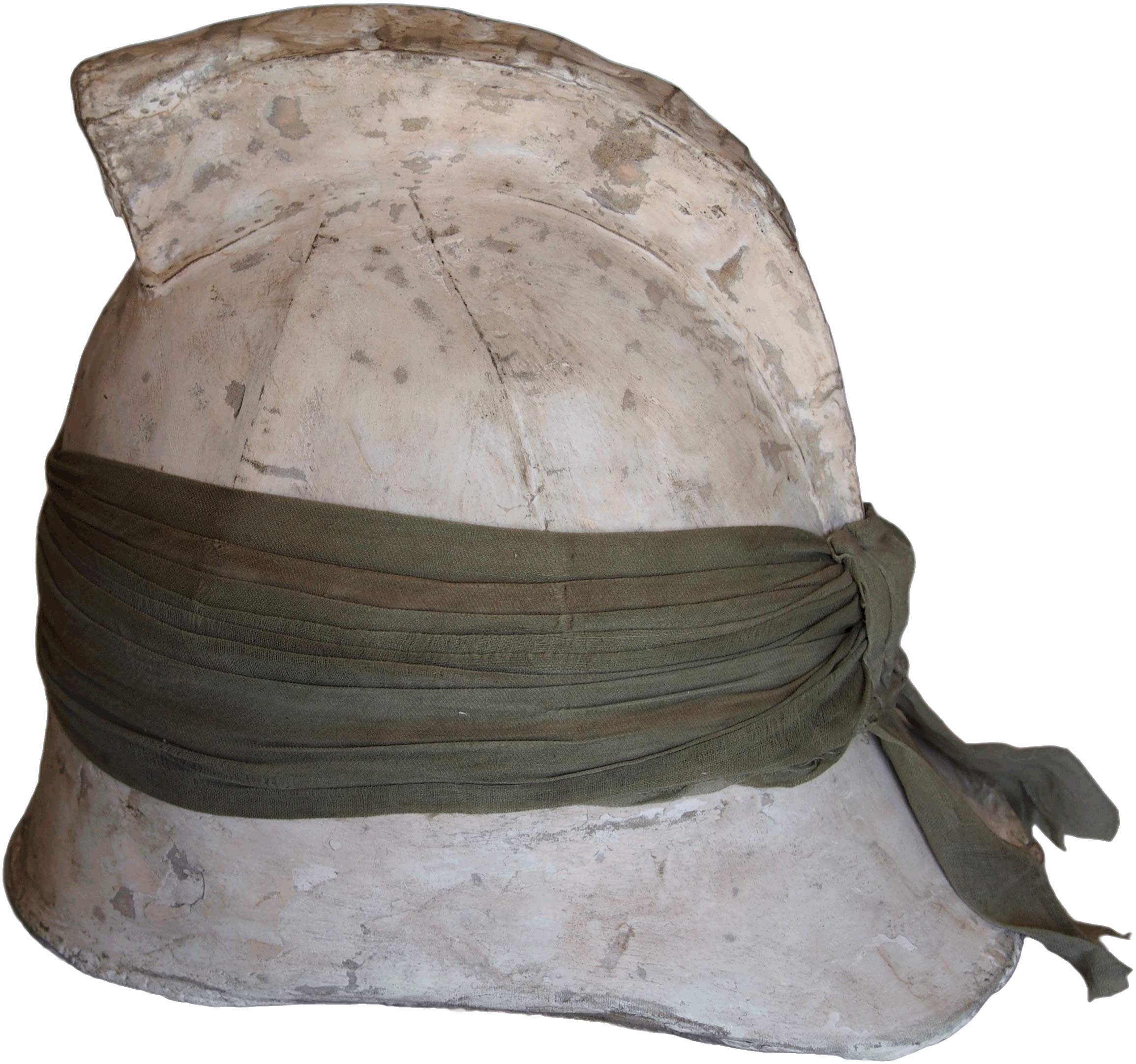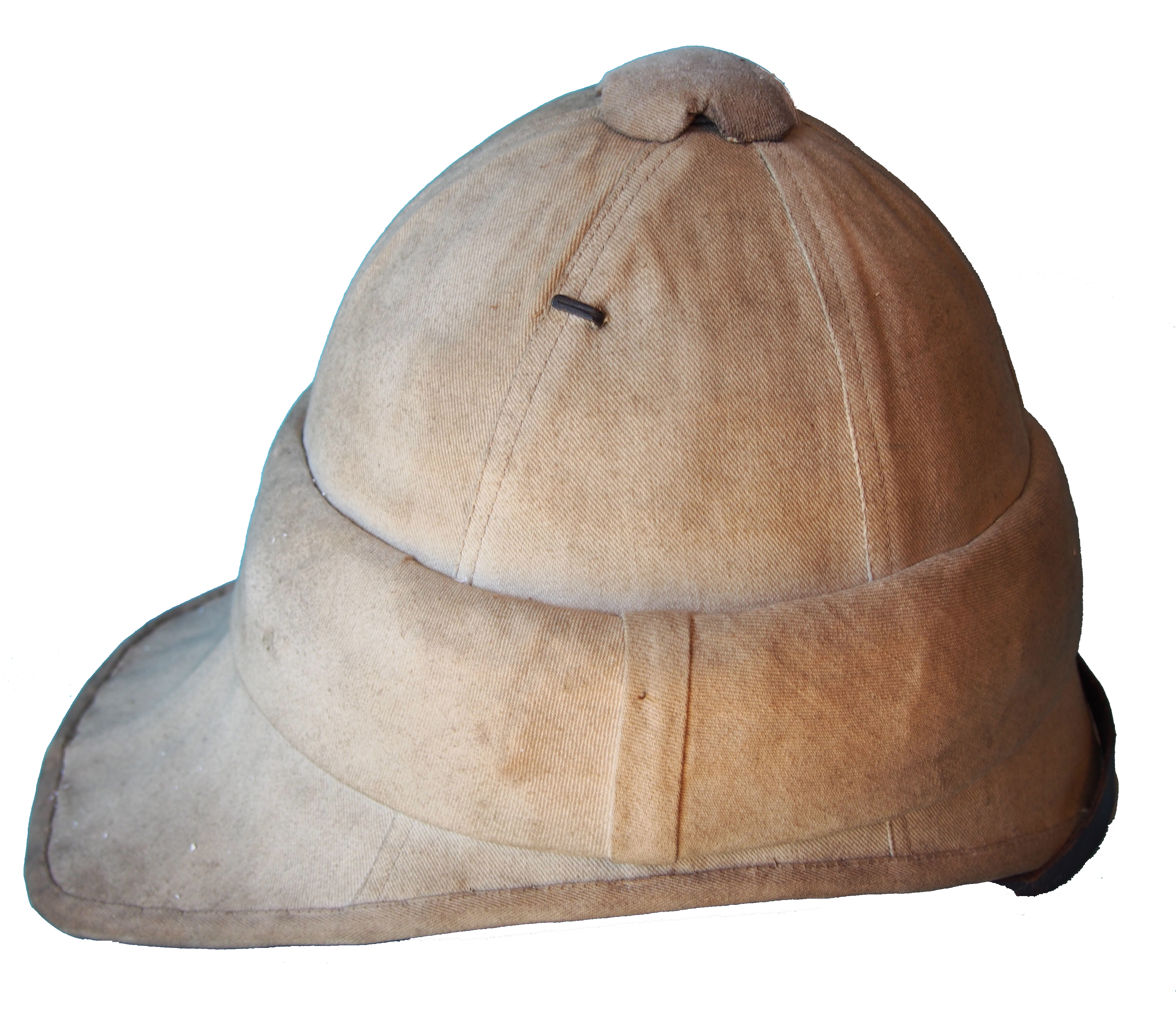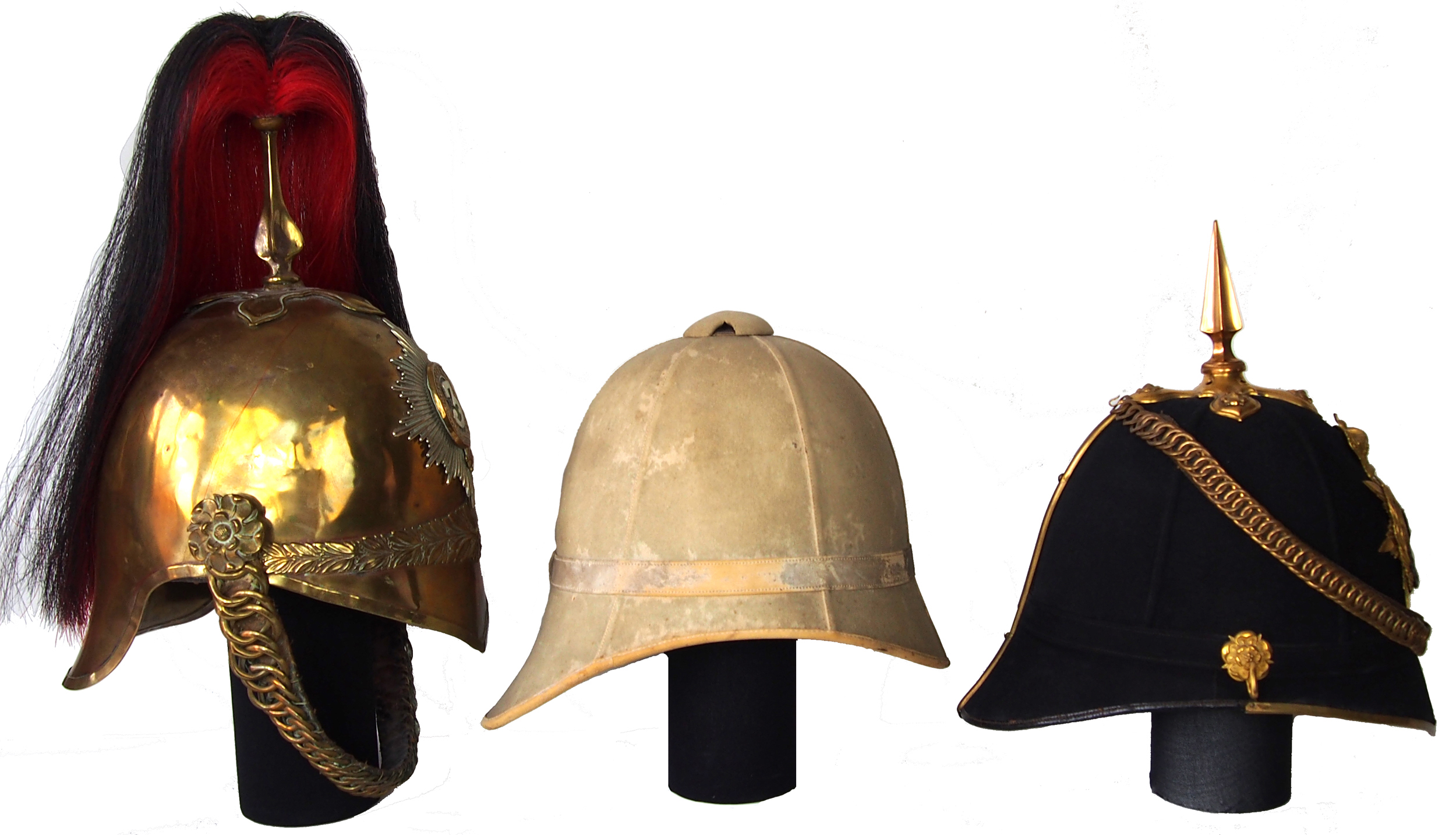
The Ellwood and Sons’ “Roman” Air Tube design was among the first British-made sun helmets. Its design came about largely as a result of Great Britain’s expanding empire in India and parts of Africa. It was in many ways an answer to locally made helmets, which were increasingly necessary due to the tropical heat of the subcontinent.
By the time of the Indian Mutiny, which began in 1857, the British had already had a presence in India for well more than 200 years yet it wasn’t until the 1840s – coinciding with the effects of the end of the Little Ice Age in Europe – that serious consideration was given to making uniforms and headdress more comfortable for wear in hot weather.
Among the first attempts to offer better cooling to the head was a unique design that exemplified the can-do spirit following the Age of the Enlightenment with the technological advances of the Industrial Revolution. It came about in 1851 as hat maker Henry Ellwood of the firm of J. Ellwood and Sons patented a so-called “air chamber principle” for hats. This design consisted of hats that would feature two layers with a space or chamber between them, so that in hot climates the heat of the sun couldn’t pass to the head of the wearer.
 Ellwood’s design noted that hats could be made of any suitable material, but suggested that care be taken to keep the overall hat as light as possible. Based on patents and advertisements of the era from the very beginning it was clear that Ellwood saw a potential for this to be used in civilian and military headdress alike. Period ads show its use in gentleman’s hats, but Ellwood soon introduced what could arguably be the first English-made sun helmet, which became known as the “Roman Air Tube” helmet.
Ellwood’s design noted that hats could be made of any suitable material, but suggested that care be taken to keep the overall hat as light as possible. Based on patents and advertisements of the era from the very beginning it was clear that Ellwood saw a potential for this to be used in civilian and military headdress alike. Period ads show its use in gentleman’s hats, but Ellwood soon introduced what could arguably be the first English-made sun helmet, which became known as the “Roman Air Tube” helmet.
The shape of the helmet was likely based on the “Roman Style” cavalry helmets that were in use with the Life Guards and other heavy cavalry units of the British Army beginning around 1812. Those metal helmets featured a tall comb over the dome of the helmet. In the case of the cavalry helmets a piece of bearskin or horsehair mane was affixed to the comb. By the early 1840s these helmets became less ornate and the bearskin removed in favor of a detailed crouching lion motif fitted to the front. This style helmet was certainly meant to evoke helmets worn in the Classical Era notably those of Ancient Greece and Rome.
By the early 1840s these helmets became less ornate and the bearskin removed in favor of a detailed crouching lion motif fitted to the front. This style helmet was certainly meant to evoke helmets worn in the Classical Era notably those of Ancient Greece and Rome.
 The Ellwood pattern featured a similar – but far plainer comb. However, its purpose was also to provide cooling to the wearer’s head. Instead of metal the helmets were made of much lighter materials. As noted in C. P. Mills’ book The Pith Helmet: Jaunty Hat (Military Orphan Press, 2013, page 86), the Ellwood’s helmet construction consisted of “two felt shells glued together where crown joined brim, these hats had 35 eyelets inserted through a felt inner skin, air ventilation holes.”
The Ellwood pattern featured a similar – but far plainer comb. However, its purpose was also to provide cooling to the wearer’s head. Instead of metal the helmets were made of much lighter materials. As noted in C. P. Mills’ book The Pith Helmet: Jaunty Hat (Military Orphan Press, 2013, page 86), the Ellwood’s helmet construction consisted of “two felt shells glued together where crown joined brim, these hats had 35 eyelets inserted through a felt inner skin, air ventilation holes.”

By the outbreak of the Indian Mutiny the Ellwood “Air Tube” helmet was already in use in India. This style of helmet was popular with army officers in Bengal Army Command, a unit of the Honourable East India Company, which at the time operated completely independently of the regular British Army. However, while Ellwood may have had a patent on the design the firm didn’t have a monopoly on air tube helmets.

Other English firms were already apparently copying the design, but it was Indian hatters who were able to obtain a slice of the market. Instead of felt the local Indian makers used quilt-stitched calico over a rattan wicker-work frame, which was then painted. The overall shape of the helmets in India retained the Roman influence – but within a generation this style was truly a thing of the past.

Two major factors played a role in the demise of the air tube design. The first was that Prince Albert, consort of Queen Victoria, had a serious modernizing effect on the British Army. In addition to help in creating a truly professional British Army he oversaw small details – notably the design of the heavy cavalry helmet. Prince Albert had found the Roman style helmets to be heavy to wear and thus uncomfortable for long period of times. Instead he simplified the design removing the comb in favor of a plume – this in turn evolved into the infantry’s Home Service Helmet, which featured a spike instead of a plume.

The Home Service Helmet was officially adopted in 1878; a year after the Foreign Service Helmet was adopted. That pattern was an evolution of the Ellwood design but the comb was removed – thus making for a helmet that was clearly inspired by Prince Albert’s cavalry helmet.
The Foreign Service Helmet came about because of another innovation that occurred around the same time as the Indian Mutiny. While Ellwood utilized traditional hat making methods to create his felt helmets, rival hatter Hawkes & Company perfected the use of sheet cork, a material known for its non-conducting properties including the transfer of heat, as a material for hats and helmets.

Cork in itself lacked the tensile strength that even a softer material such as felt could provide, but when glued to fabric it provided both strength and flexibility – the result was the tropical helmet that nations throughout Europe and soon the world would embrace. For English hatters it made sense to use cork as it could be sourced from long time ally Portugal – while Indian hatters would adopt similar practices with locally grown sola pith.
With cork helmets and a more modern design it was the end of the line for the Ellwood Roman Air Tube helmets. Today there are only two original Ellwood helmets even known to exist in complete shape including one in the collection of the author. Sadly, perhaps due to the scarcity, this helmet pattern has been left to little more than a sidebar in the history of the sun helmets of which it started.
Peter Suciu
September 2018
Thanks go out to Benny Bough who unearthed the Ellwood’s patent and to both Benny and Stuart Bates for their additional insight on this subject.

Contrary to this article, if you read Jaunty hat you will learn that Roman air tubes were not the first British made solar helmets, as the style did not appear until about 1852, which is likely 5 years after first English manufacture of earlier styles
Hi Peter, Excellent piece. Have you, or anyone else, come across images of the indigenous helmets which these were supposedly based on?
Who owns the other survivor? Is it identical?
Regards
Steve